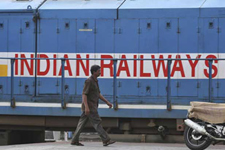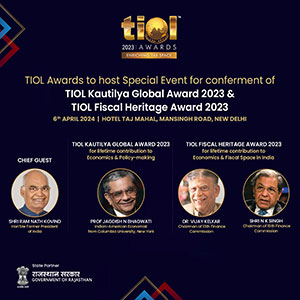Changing Transfer Pricing Scenario in India - Part I
AUGUST 02, 2014
By Yudhvir Dalal
ADOPTION of liberalisation, privatisation and globalisation (LPG) in 1991 led to the onset of multinational enterprises ('MNEs') in India. This led to the large inflow of Foreign Direct Investment (FDI) into India. The need for recognising transfer pricing as separate branch of taxation was felt. It was in Nov. 1999 that an expert group was set up by the government to study global transfer pricing practices and examine the need for detailed legislation specifically dealing with transfer pricing. The expert group recommended separate provisions for dealing with transfer pricing disputes. As a result after 2 years of efforts in 2001, separate provisions only dealing with transfer pricing were enacted in the form of Chapter X of the Income Tax Act, 1961 ('the Act'). The provisions under Chapter X have been further elucidated in Rules 10A to 10E of Income Tax Rules, 1962 ('the Rules'). The Finance Ministry in its Circular No. 12/2001, dated August 23, 2001 clarified that Chapter X was introduced “with a view to provide a statutory framework which can lead to computation of reasonable, fair and equitable profits and tax in India". This was an apt step to counter the menace of tax avoidance by manipulation of transfer prices.
In a recent development, the Direct Tax Code Bill, 2010 ('DTC 2010') in order to align the Indian tax regime with global best practices has proposed numerous significant changes in the Act. In relation to transfer pricing, DTC 2010 adds two more circumstances in which enterprises will be treated as associated enterprises (hereinafter 'AEs'). First, when an enterprise influences the terms and price at which services are provided to another enterprise (such a condition already exists in the Act for 'goods'). And, second, where one of the enterprises is located in a specific or distinct location, as may be prescribed.
In India, transfer pricing disputes can be resolved either under domestic law or through mutual agreement procedure (hereinafter 'MAP'). There are various dispute resolving mechanisms provided within transfer pricing provisions in the Act. India has entered into double taxation avoidance agreements (hereinafter 'DTAAs') with many countries in order to provide relief to tax payers in cases of double taxation. MAP, an alternative dispute resolution mechanism under DTAA is increasingly used for resolving transfer pricing disputes in India. Another recent development (through the Finance (No. 2) Act, No. 33 of 2009, SEC. 42) has been the introduction of safe harbour provisions under section 92CB of the Act. In order to enforce safe harbour mechanism, CBDT first put Draft Rules for public comments on August 14, 2013 and later finalised them on September 18, 2013. Advance pricing agreement (hereinafter 'APA') being a globally recognised pre-emptive mechanism is an important tool to avoid and mitigate the disputes or uncertainties arising from transfer pricing. But, in India this mechanism is of recent origin, as it was introduced in the form of sections 92CC and 92CD of the Act, by the Finance Act 2012. However, earlier it was included in proposed section 118 of DTC 2010. APAs entered could be valid for maximum of five years.
Mechanism of Arm's Length Price under Indian Domestic Law
Section 92 of the Act makes it mandatory that any income arising from an international transaction shall be computed having regard to the arm's length price. 'Arm's length price'(hereinafter 'ALP') means a price which is applied or proposed to be applied in a transaction between persons other than associated enterprises, in uncontrolled conditions. This principle of ALP has been incorporated in order to prevent tax avoidance by associated enterprises. By applying ALP, the profit-element of transactions involving intra-group sale of goods, intra-group services, intra-group transfer of technology, intra-group loans, thin or hidden equity capitalisation and treaty shopping, are taxed.
The Act under section 92C (1) prescribes for five methods for computing ALP of an international transaction. These are namely, comparable uncontrolled price method (CUP), resale price method (RPM), cost plus method (CPP), profit split method, transactional net margin method (TNMM). Rule 10B of the Rules, explains the manner of application of these methods. Recently, by Income Tax (Sixth Amendment) Rules, 2012, clause (f) of section 92C (1), which provides for 'such other methods as may be prescribed by the Board' has been made applicable by inserting Rule 10AB.
Primarily, it is the choice of tax payer to select any of the prescribed methods, as the 'most appropriate method'. The most appropriate method is basically chosen after analysing the Functions involved, Assets employed and Risks assumed ('FAR Analysis') in a transaction. The department can adopt any different method only in case of tax payer's failure to comply with the section 92C (3). Through Philips Software Centre Private Ltd. v. ACIT 2008-TIOL-471-ITAT-BANG, it is established that Revenue is not justified in adopting a different methodology unless it is proved that the methodology adopted by the tax payer is erroneous.
(In this part, Transfer Pricing and various mechanisms of resolving Transfer Pricing disputes in India were highlighted. Further, significance of 'arm's length principle' and various methods provided under Indian Tax Law, for computing 'arm's length price' of an international transaction were discussed. Against this background of Transfer Pricing and 'arm's length principle', adoption of 'Bright Line Test' as a new mechanism for computing 'arm's length price' of an international transaction will be analysed in the second part of the article, which will be published the day after.)
Also See : Evaluation of Bright Line test in Indian TP Scenario - Part II
(The author is a fifth semester student at National University of Advanced Legal Studies, Kochi.)
|
(DISCLAIMER: The views expressed are strictly of the author and Taxindiaonline.com doesn't necessarily subscribe to the same. Taxindiaonline.com Pvt. Ltd. is not responsible or liable for any loss or damage caused to anyone due to any interpretation, error, omission in the articles being hosted on the site..)
|















